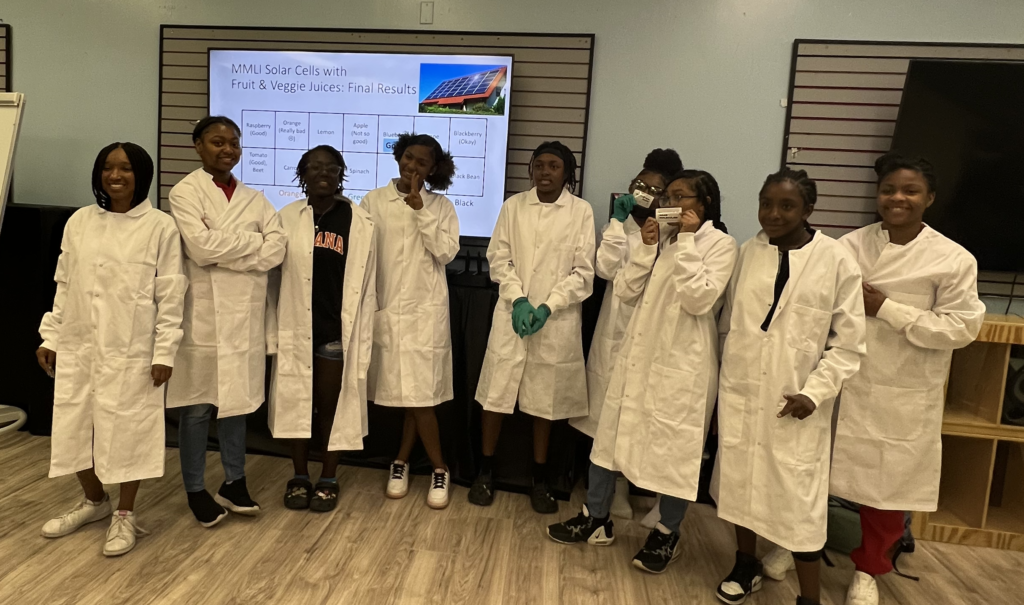Where does energy come from? Why do want “renewable energy?”
- Thought exercise: How do colors impact energy absorption? Does absorption vary between colors?
- Students learn how the above concept links to solar panels and how they function.
- Students learn about the different forms of energy and pro’s and con’s of renewable vs. non-renewable resources.
- mini probability lesson: learn how to think like a scientist with a “Stay or Switch” strategy.
- Application: apply strategy as a group to explore how different fruit and vegetable juices act to conduct electricity.
- Which strategy helped yield the best results?
- Extension: how development of Organic Solar Cells at MMLI uses the exact same strategy to drive discovery of more renewable resource options!
Parallels to MMLI Research:
Thrust 4 of MMLI focuses on Molecular and Material discovery, with a focus on Organic photovoltaics (OPV) AKA organic solar cells. Current solar cells (what solar panels are made of) use a silicon base, which while efficient at harvesting sunlight, pose many disadvantages including size and cost. Organic solar cells, on the other hand can provide a better alternative so that the resulting feature can be much smaller in size, and ideally much cheaper – increasing the likelihood of widespread use. Current issues include the fact that organic solar cells are somewhat unstable in sunlight, resulting in breakdown with use. Additionally, current materials are not quite as efficient as their silicon-based counterparts. The research incorporated in this lesson is largely based on the specific work from the Diao and Jackson groups. Researchers such as PhD candidates Tiara Torres-Flores and David Friday are working to use AI-based methods to test new molecules and materials that will help solve this problem with organic solar cells and help provide additional resources for renewable energy! Researchers employ similar strategies to the “stay and switch” strategy used by students in this lesson, but add another layer of computational analysis and AI to explore thousands of possible options.
Resources
